Traditional African architecture, rooted in practices that predate the advent of electric lighting in the late 1800s, embodies a rich tapestry of representations and symbols. These architectural forms serve as conduits for conveying multifaceted elements of beauty and significance, intricately interwoven with the cultural, ecological, artistic, and aesthetic diversity of the African continent. They stand as tangible manifestations of Africa’s heritage, influencing various aspects of daily life, including the formation and perpetuation of gender roles. In the face of contemporary forces encroaching upon these rural areas, it is imperative to recognize this architectural heritage as a cultural “open book” that warrants exploration and preservation. The remarkable achievements of these architectural wonders have garnered widespread acclaim and scholarly attention. However, the vital roles played by women in the planning and construction of these structures have often been marginalized or inadequately acknowledged in historical accounts.
 In rural sub-Saharan Africa, construction is a communal endeavor. The community as a whole, as well as the owner’s extended family, participate in the construction of a new home or complex. However, each participant can create, thus the owner of each new compound will act as his architect. The owner is just the master builder of his compound. In the savannah, for instance, the men and boys carry the earth from the nearby borrow pits, the women carry the water to mix the earth into a proper workable consistency, and the owner, the “architect-mason,” then shapes the kneaded mud into spherical, conical, or cylindrical balls and places them in coil fashion. The specified division of labor between men and women is not arbitrary; rather, it reflects the more fundamental division of labor that is characteristic of many rural African civilizations.
In rural sub-Saharan Africa, construction is a communal endeavor. The community as a whole, as well as the owner’s extended family, participate in the construction of a new home or complex. However, each participant can create, thus the owner of each new compound will act as his architect. The owner is just the master builder of his compound. In the savannah, for instance, the men and boys carry the earth from the nearby borrow pits, the women carry the water to mix the earth into a proper workable consistency, and the owner, the “architect-mason,” then shapes the kneaded mud into spherical, conical, or cylindrical balls and places them in coil fashion. The specified division of labor between men and women is not arbitrary; rather, it reflects the more fundamental division of labor that is characteristic of many rural African civilizations.
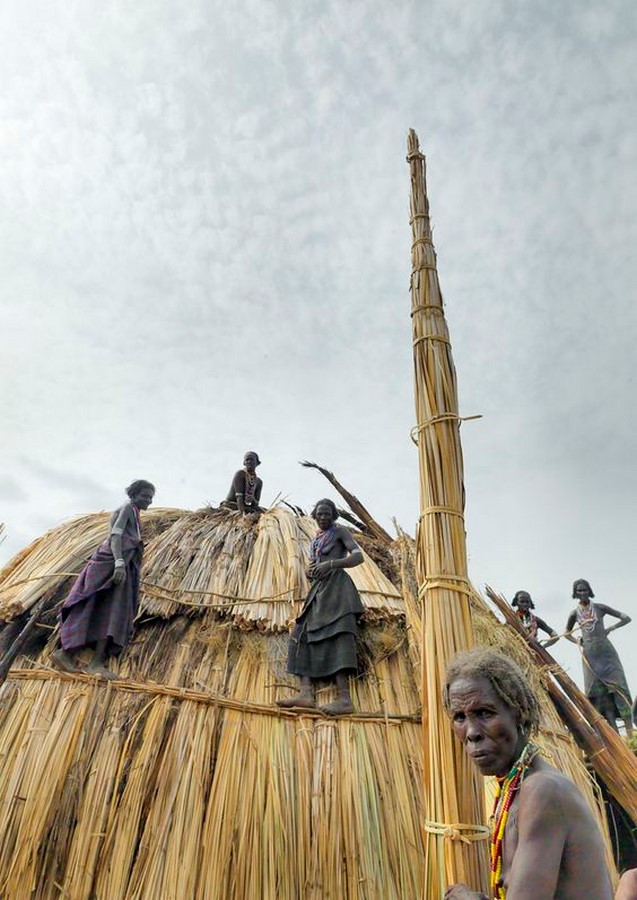
Ndebele Architecture
During the 18th century, the Ndebele ethnic group emerged in the southern regions of Zimbabwe and the northern region of South Africa. They are renowned for their historical conflicts with the neighboring Boer tribe, leading to the loss of their ancestral lands and their forced labor as indentured servants. Amid this oppressive period, the Ndebele people developed a distinctive form of art using colors and patterns as a means of clandestinely expressing their sorrow and cultural resilience in their homes. Women, particularly, employed black-and-white geometric designs with great precision, using earthy, natural tones. Over numerous generations, this color palette gradually developed into a five-color system: Black, representing the spiritual realm’s inhabitants; White, symbolizing purity; Red, signifying passion and authority; Yellow, denoting fertility and optimism; and Green, representing land and agriculture.
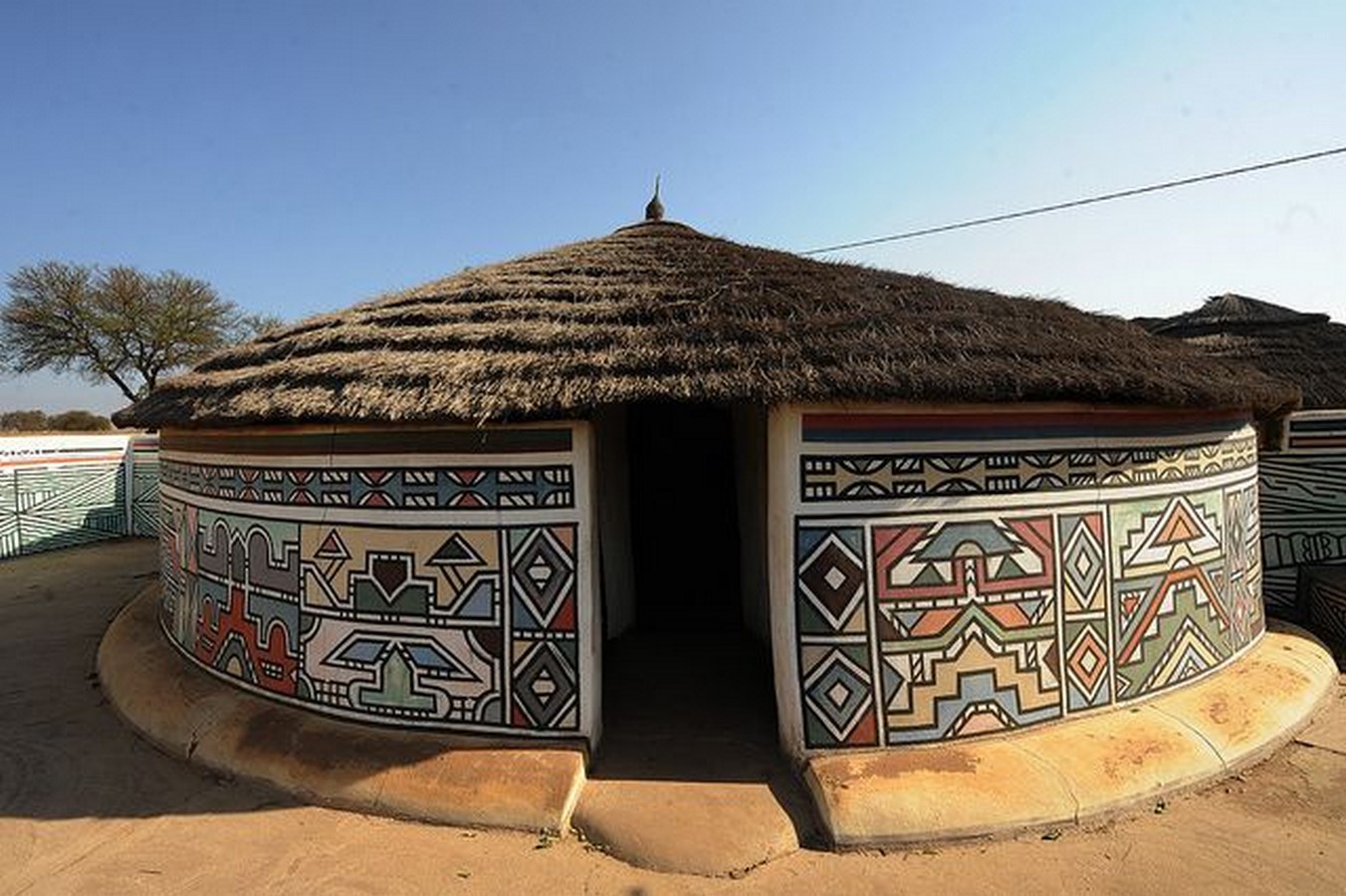
The Ndebele community traditionally assigns certain heavy tasks such as erecting walls, constructing timber roof frames, and thatching roofs to men. Women do contribute to some of these activities, such as mixing clay mortar, preparing thatch bundles, and making sun-dried bricks. However, the responsibility for tasks like plastering walls, creating living areas within the homestead, and any subsequent light maintenance of the structure falls primarily on women, as they are in charge of household spaces. This also includes adding decorative motifs to the walls. In contrast, men are responsible for building and maintaining areas related to cattle enclosures and male gatherings, which are considered “men’s” spaces. The courtyards and areas designated for children’s living quarters and cooking activities are seen as the wife’s and mother’s specific responsibilities. However, the internal living space shared by the parents is equally divided into a section for the woman and one for the man.
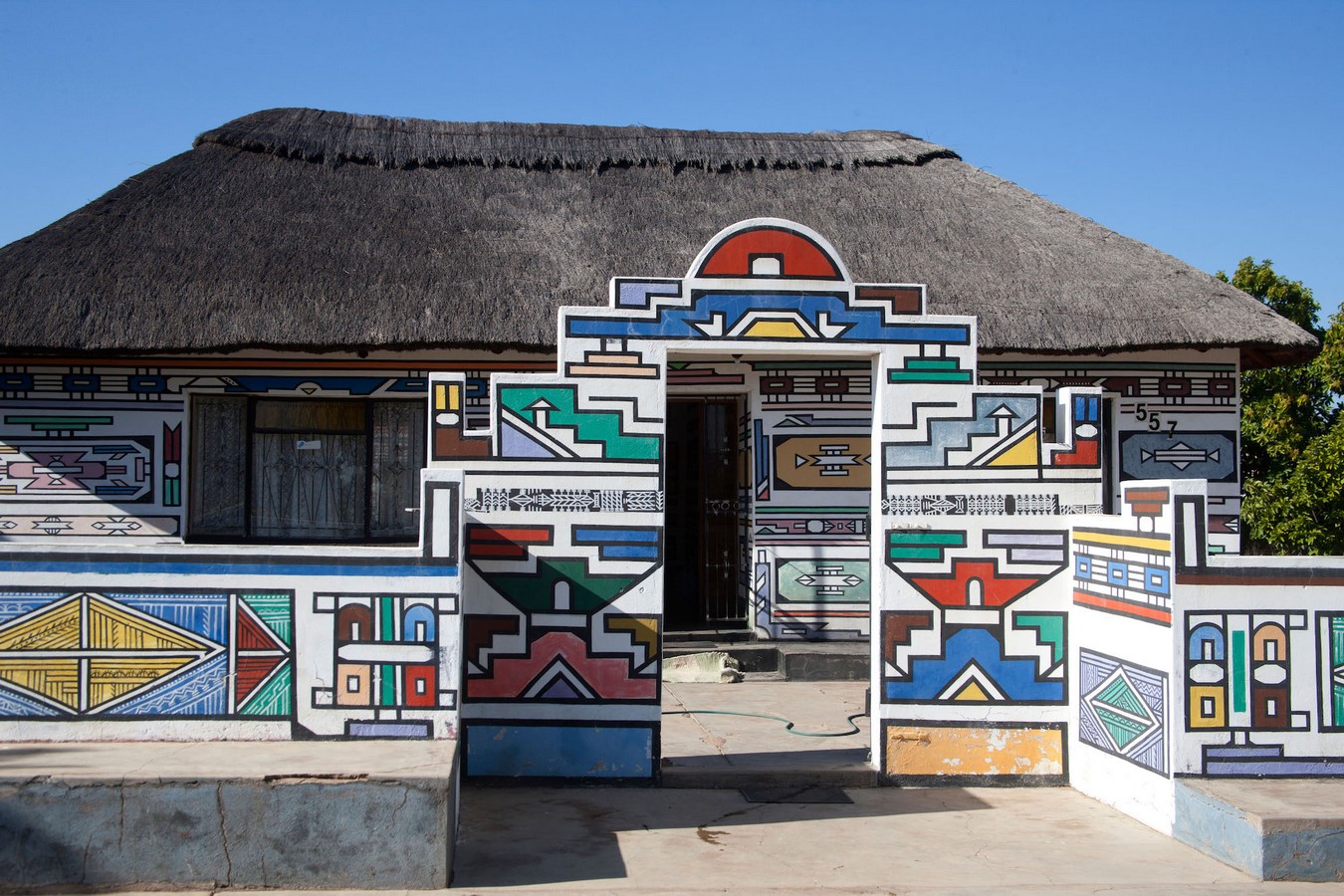
Some Ndebele people use a metaphor to describe their architectural spaces, likening them to the body of a woman. In this metaphor, the front courtyard, where “clean” activities take place, is compared to a beaded apron, which married women wear as part of their wedding attire. The parents’ dwelling is seen as the womb, representing the mother’s presence and the origin of the family’s fertility, children, and wealth. The rear quarters, housing cooking areas, and children are considered the breasts from which all nourishment emanates. Since the late 1940s, Ndebele wall paintings have increasingly incorporated stylized patterns and images from nearby Victorian small-town architecture, as well as elements from urban consumer and industrial society. This has resulted in the development of a complex code of images based on color and form, used to convey messages related to fertility, political rights, territorial boundaries, family lineage, and regional identity.
The practice of decorating walls typically begins approximately two years after the birth of a woman’s first child. Wall decoration symbolizes women’s fertility and signifies their status as mothers, heads of households, and responsible adults in the community. It is also associated with significant life transitions for women, such as their daughter’s marriage or their son’s initiation school period. Wall decoration not only establishes territorial control but also implies that women play an active role in managing rural household spaces and food resources. The painting is usually carried out by the mother or her teenage daughters under her guidance, serving as part of the young girls’ training. Upon marriage, a daughter is often presented with a partially finished beaded apron, known as the mapoto, bearing the essential elements of this design
In the communities of Daura in Nigeria, women played roles beyond decoration; they actively participated in the construction process. This involvement extended to tasks like supervising the installation of floors and roofs. While men typically handled responsibilities related to building walls and foundations, women assumed the crucial role of preparing and ensuring the waterproofing of roofs.
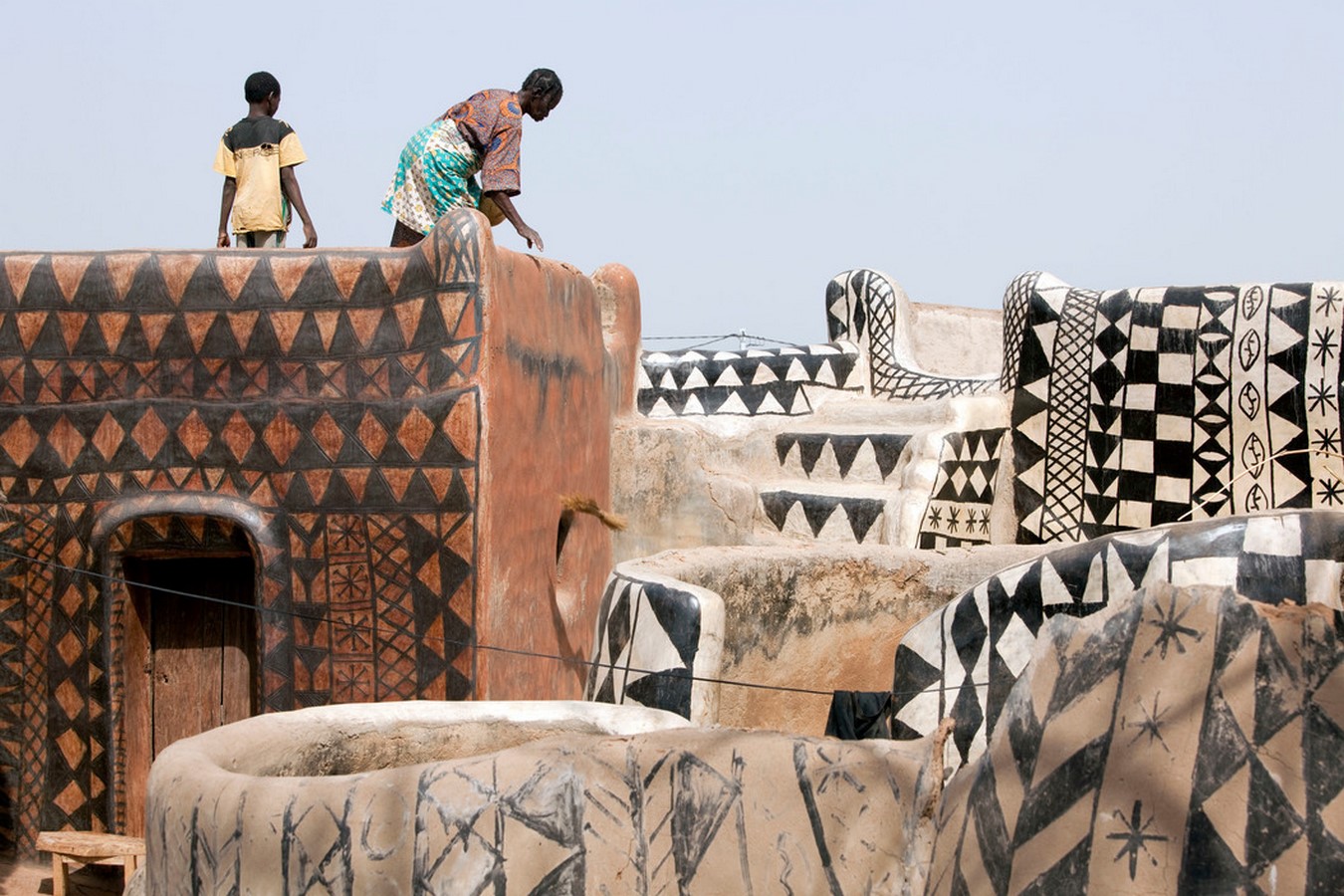
This pattern of gender-based construction responsibilities is also evident in nomadic communities, as supported by archaeological and ethnographic evidence. For instance, in nomadic groups like the Toubou in Libya and Chad, as well as the Kababish and
Mahria communities in Sudan, women were responsible for tasks such as setting up tents, designing them, selecting construction materials, and ensuring the structural stability of the shelters. In nomadic Saharan communities, women play a crucial role in shaping the physical environment across African landscapes. They are responsible not only for gathering raw materials but also for designing and constructing various elements such as floors, roofs, and plastering in both residential and non-residential structures.
The Mana Hut
The Mana is a traditional shelter built by the Gabbra people. It is so versatile that it can be quickly disassembled and transported to a new location. The Mana was fully created and built by women. It is a typical Gabra cottage called the Mana. It is the Gabra residential unit where a household’s members reside. It is a movable dome-shaped construction with a three-meter diameter that can be quickly disassembled by trained Gabra women.
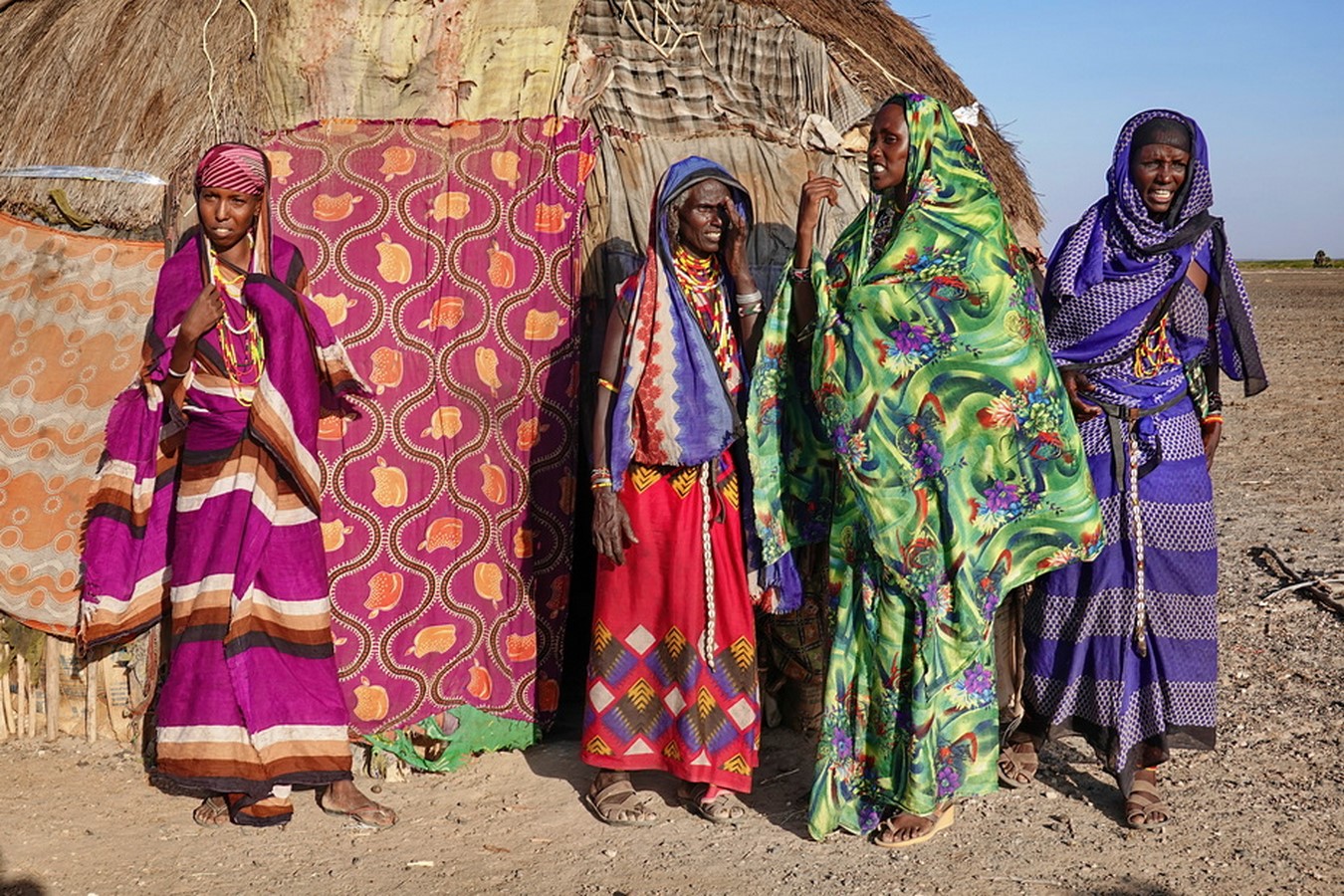
Gabra women construct the Mana using a framework made of poles that are firmly embedded thirty centimeters into the ground and bent at the top to form the roof. They use leather thongs to bind thin sticks to these poles in a horizontal pattern, spaced at regular intervals. A covering made of dasse (sisal mats), ithile (goat or sheep skins), and occasionally discarded fabrics are placed on top of this structure of poles. These are secured with ropes that bind everything together. The portion of the hut that meets the ground is surrounded and covered with dried bushes. This aids in preventing sand particles from being blown in by the wind. The ladies make sure that all Gabra huts are uniform and have their doorways towards the west by Gabra tradition. This is done to stop the east-west wind from sweeping sand and dust into the homes. The Gabra are found in towns called Olla or manyatta. An olla is a group of people who live together in huts (Mana). There could be kinship or not. The population of an Olla varies, and the towns are often spread apart. The Mana will gather around wells during the dry seasons. The majority of Gabra ollas relocate every three to four months in search of quality pasture.
The Mana demonstrates how ingenious and very functional traditional African building was in every way. Sustainable housing was conceptualized by the renowned female architects of Gabra before it became a modern trend.



















